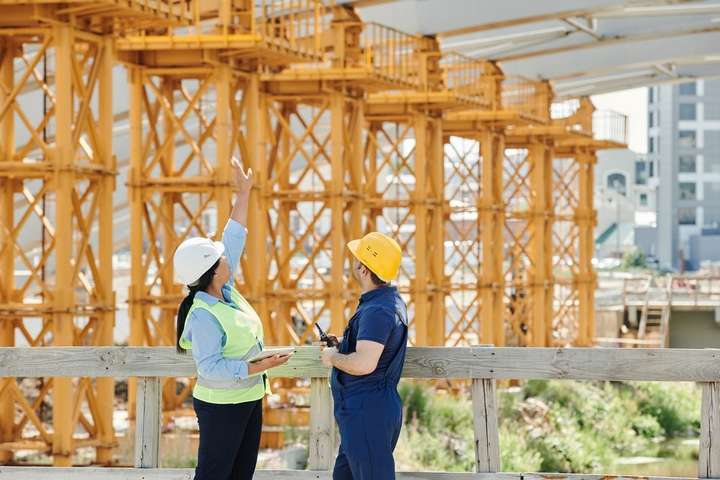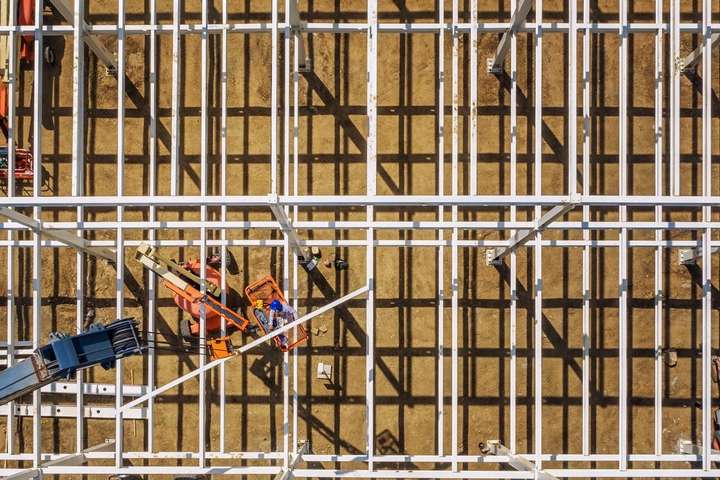When you are working on a construction project, it is important to make sure every structure you build can hold its own weight and the weight of specific loads. Load testing is one of the most important parts of any construction project. It ensures the structural integrity of every building and the safety of those who plan to use them.

If you are in construction, you know how important load testing in Charlotte is. If you are just starting your construction career, here’s everything you need to know about load testing.
Live Loads vs Dead Loads
There are two main kinds of loads construction workers use in construction: live and dead loads.
Live loads account for the nonstructural elements in a building. These are all the things you add after the building is complete. They can be things like…
- The weight of riad or snow
- People, furniture, and other goods added to the building
- Wind and temperature changes
- Moving loads from earthquakes or other natural disasters.
- Weights caused by other disasters
- Traffic, like what you would see on a bridge
As you can see, they can be movable or unmovable loads that can affect a building differently. They are variables that change on a dime and can be difficult to calculate if you don’t know what you’re doing.
Dead loads are loads from the building itself and permanent material placed within the building. These can be:
- Tile
- The walls of the building
- Insulation
- Doors
- Windows
For the most part, dead loads can be measured fairly easily in comparison to live loads. These are structural items that make up the building, so they are easily seen and counted. Dead loads do not change that often whereas live loads are uncertainties that must be accounted for.
For more information on live and dead loads, follow the link below. https://civiljungle.com/live-load-vs-dead-load/
Why do we need load testing?
I do not know about you, but I take comfort in the fact that a building is not going to fall over at the slightest wind. Load testing ensures that elements such as rain, wind, sleet, snow, traffic, and people are not too much for the building to bear. The load limit for every building is calculated at a greater value than what they believe the max cap should be, this makes sure that they do not underestimate the circumstances surrounding the live loads since those can only be the best guess.
Load testing can help you ensure that you are using quality materials that are durable and strong at the same time. It proves that any calculations done to determine the load are accurate.
What kinds of load testing is there?
Several kinds of load testing can be performed in construction.
- Static Load Testing: constant load that is applied to the simulation over an extending period. It has been made to simulate the structure and it is more permanent components. (Think dead load testing).
- Cyclical Load Testing: constant and/or fluctuating loads. It is meant to test the deterioration of the structure’s material and stress the structure in a way to test things like cracks, fractures, and corrosion.
- Dynamic Load Testing: meant to mimic moving loads such as people or moving traffic during normal hours of operation.
Is load testing only used in new construction?
No. While it is important to use load testing in new construction to determine the integrity of the building as you construct it, it is not the only building that needs to be checked.
Load testing is an important test to perform on buildings that are older as well. As buildings age, so does their materials. This means it is important that you check to see if the load it has been assessed to bear has changed with its age. That way you can ensure the safety of those who use the building or structure on an everyday basis.
What happens if a structure fails a test?

In most cases, a structure will pass the load-bearing test. In the rare or unfortunate instance where it does not, then the structure does not passcode and it is not fit for use. Using this happens when there is extreme cracking that makes the safety requirements of a physical structure violated. If the structure shows damages during the test that the test causes, then it is considered failed as well.
If a construction project fails a load test, then another load test can be conducted only after repairs and strengthening measures are put in place to make the structure sound. Until this happens, the structure may not be suitable for use until such a time when the structure is repaired.
Repairs can cost money, but it is worth it knowing that the building or structure is safe for use. This way you can also protect your project from becoming more warn and unrepairable.
There are other reasons why a building might fail the inspection and have to be repaired. For more information on possible problems you could face while having your home inspected, click here.
Why should you hire someone to do the load testing for you?
While you may know how to conduct your own load testing, it can still prove to be a lot of work. Load testing requires a lot of materials and equipment, some of which you probably have. However, it also requires a lot of math and monitoring.
Calculations and observations have to be done and it is best to have a team of people who can accurately log all the data gathered from the initial test. It makes it a lot less work for you when someone else is designated for this task. That way your team is not being pulled or you and you can either take a much-needed break or start planning for another job.
Load testing is integral to any construction project. Without it, you may not know whether the structure you are building is safe for use. These should be performed on already build buildings as well to ensure that the structural integrity of those is also maintained.





